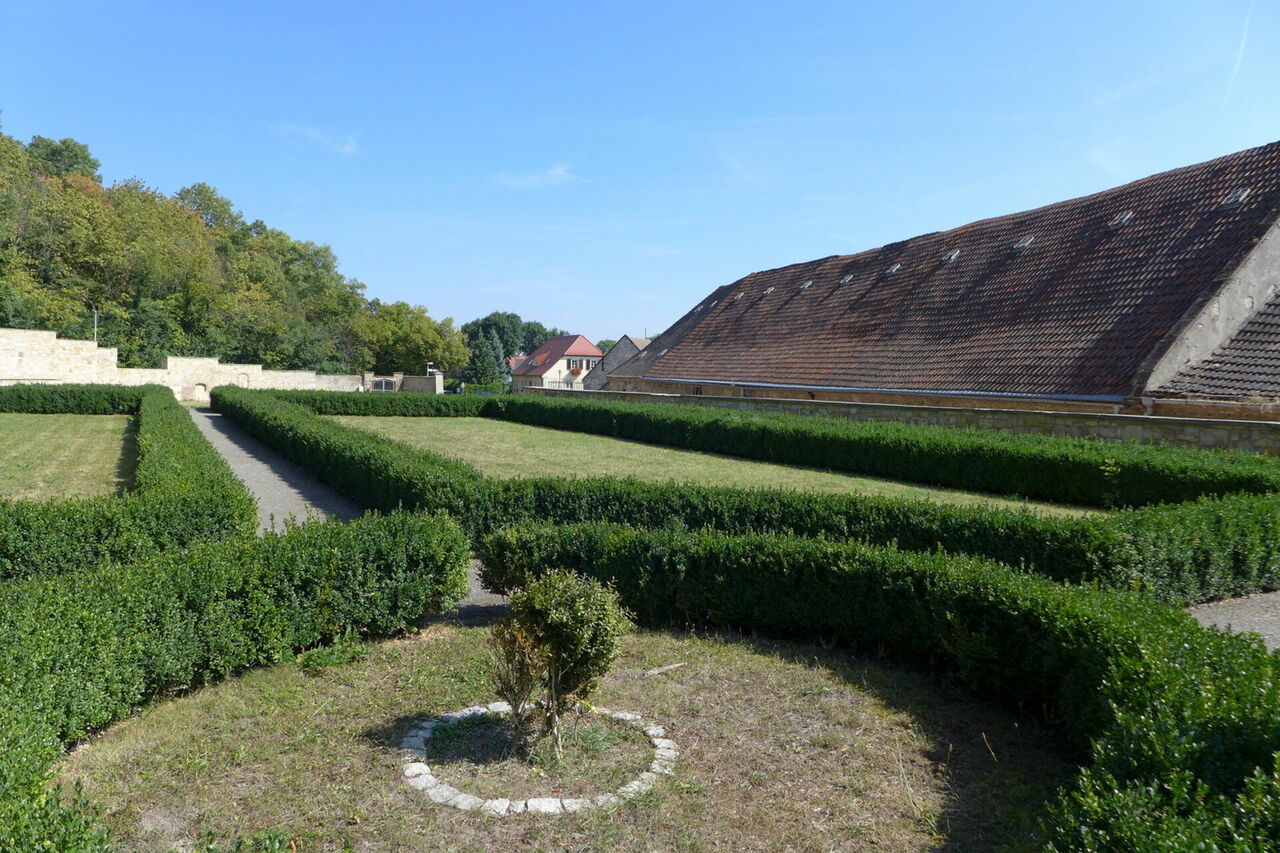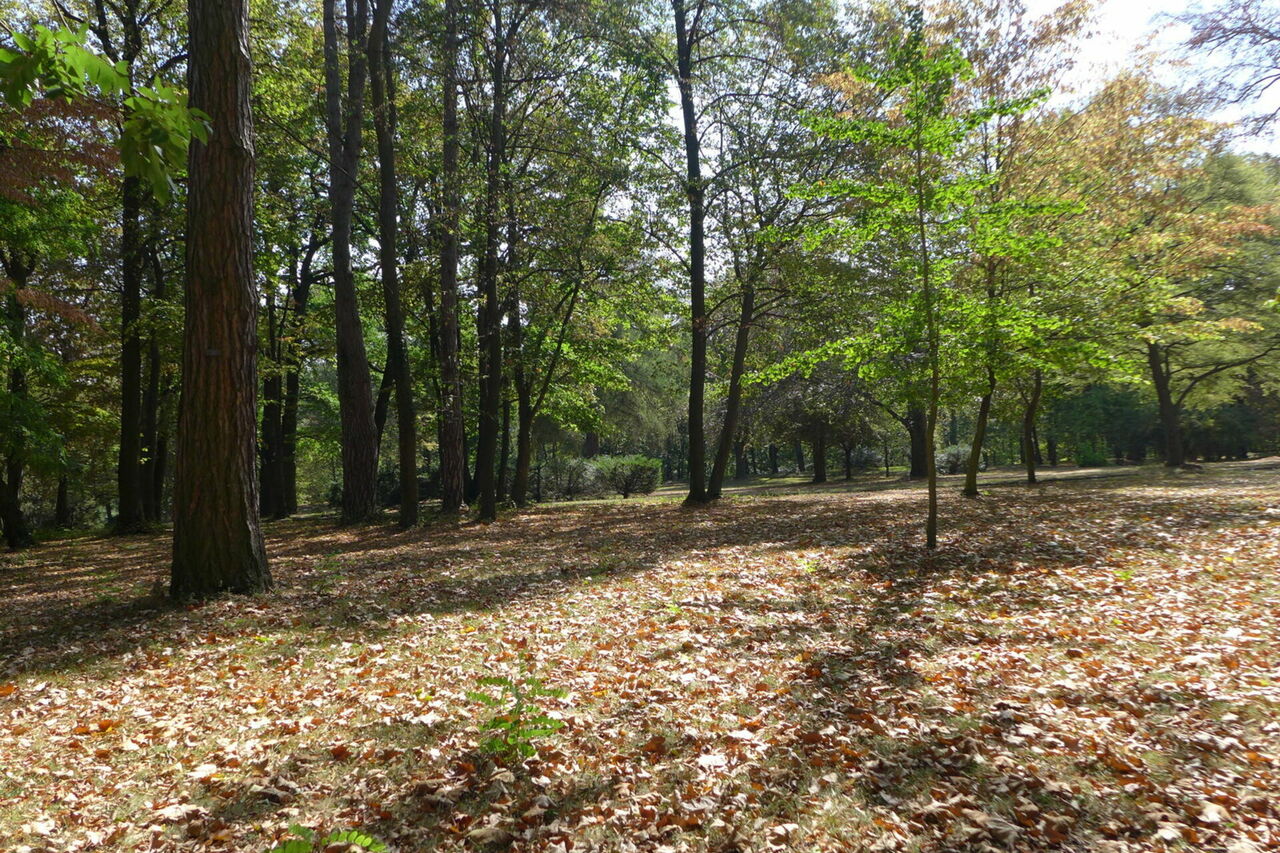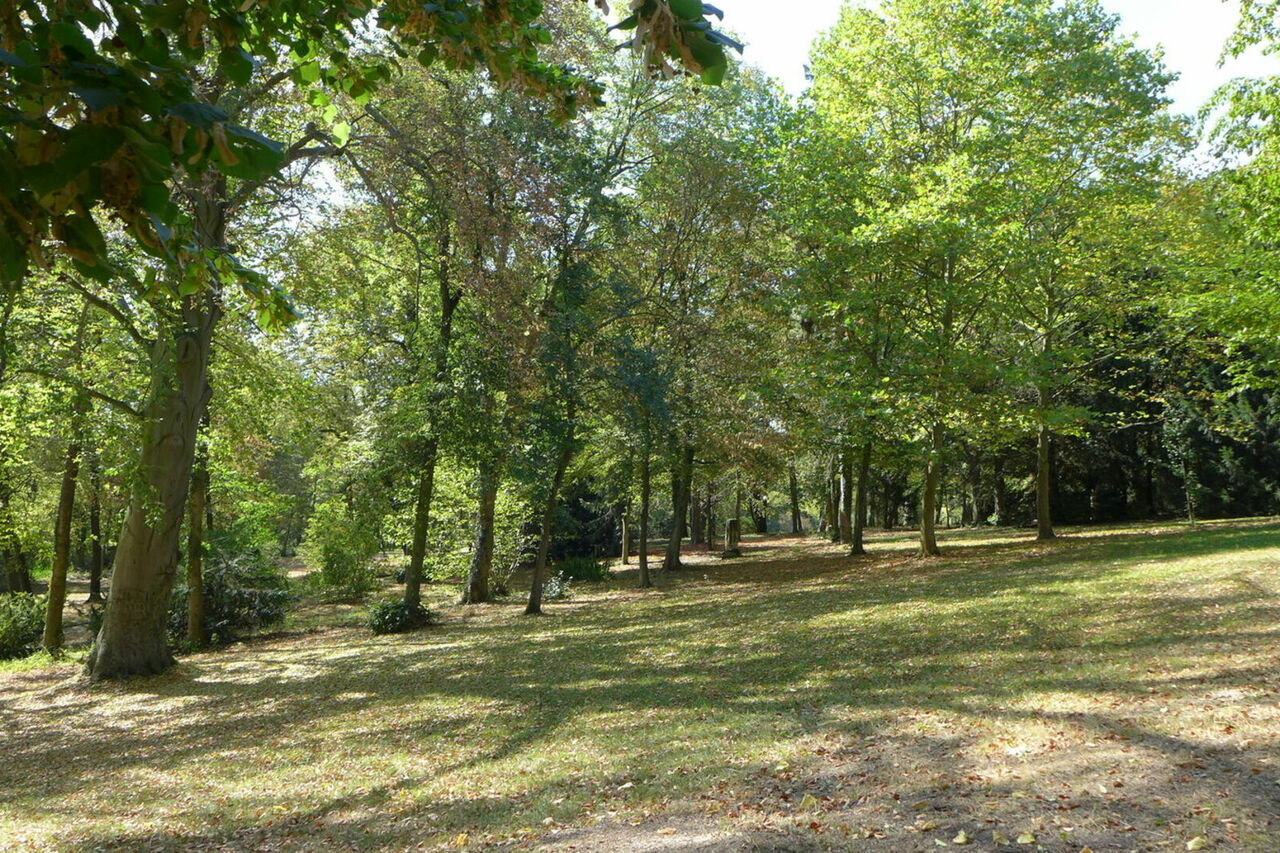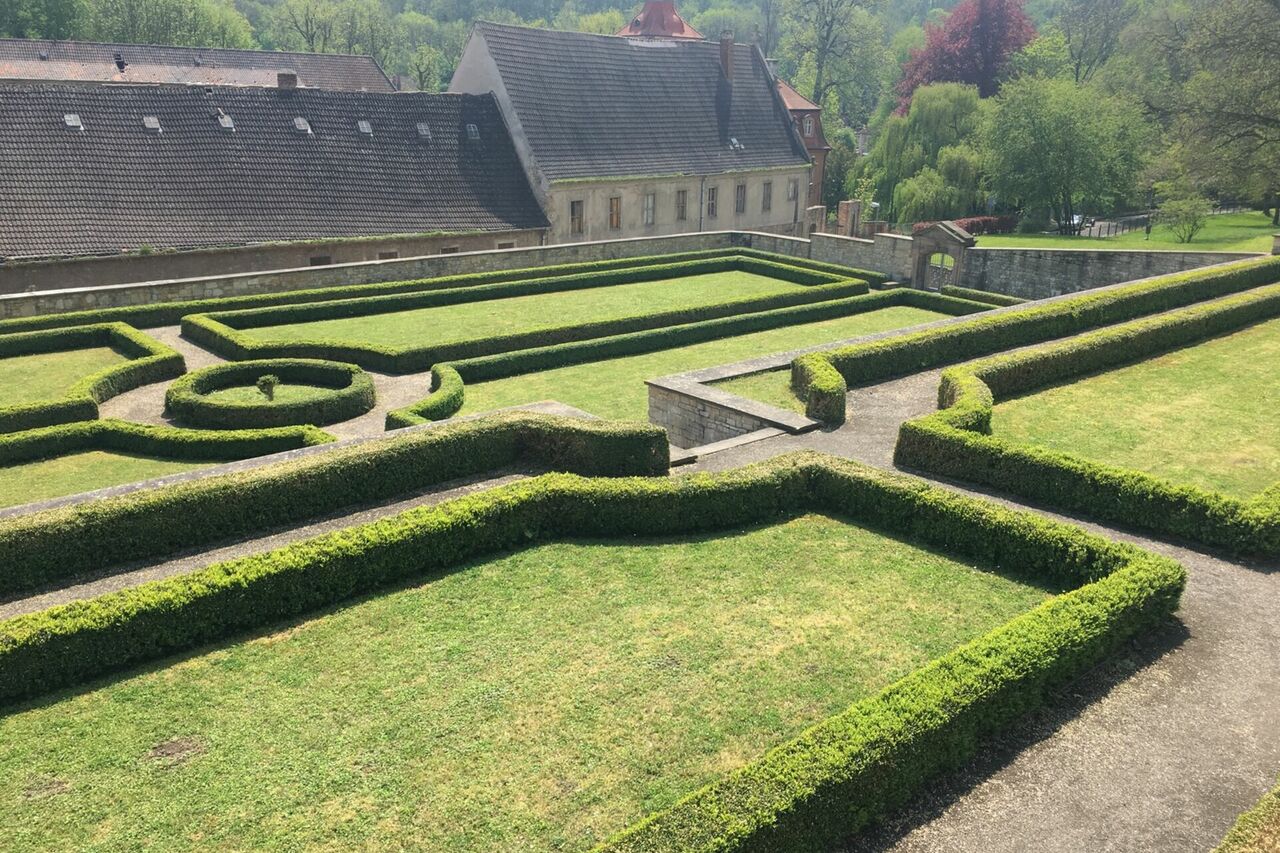47. Baroque Garden and Lansdcape Park St. Ulrich (Geiseltal)
The garden ensemble consists of an English landscape garden and a terraced baroque garden. The baroque garden is defined by high limestone walls, which divide the garden into three sections with nearly the same size. A tea house in a neo-classical style forms the upper end of the terraced garden. From here there is a nice view of Mücheln town centre.
In the 12th century, there was a moated castle at the site of today’s St. Ulrich Palace. Construction of the palace began in the 15th century. It was a pile construction on oak wood piles. The ditch around the palace must remain filled with water today as well, so that the piles do not dry out and lose their stability. The palace includes structural elements from the High Gothic period and the Renaissance period around a mediaeval tower in the centre.
Around 1720, the then-owner Heinrich August von Breitenbauch had a baroque garden according to the French model set up beside the palace. The garden was surrounded by a high wall made of limestone rubble. This enclosure is still largely intact and has been elaborately renovated and restored in many areas – true to the original – in the years since 1993. This includes the walls of the three terraces in the baroque garden – also made of limestone rubble – with a total length of over 300 metres. The baroque garden included the palace nursery, a palm tree house and greenhouses. These buildings no longer exist.
An outdoor staircase in the centre of the garden leads to a tea house constructed in a neo-classical style. It has been under reconstruction since 2016. On both terraces on both sides of the outdoor staircase, there were two life-size sculptures symbolising the four seasons. All in all, it was what is described as a magnificent garden complex with the typical elements of a baroque garden. There are cellar vaults under the terraced garden, which can be viewed upon registration at the town information centre.
In the 19th century the ensemble was expanded by a landscape park with many rare groves.
From 1921 to 1925, Karl Roderich von Helldorff, the then-owner of the palace and the Sankt Ulrich estate, had the garden redesigned architecturally and horticulturally. This included the addition of twelve putti as figural decoration.
After World War II, with the dispossession of the von Helldorff family, the garden complexes were neglected. A shrub garden and the decorative figures disappeared. Since 1993, the garden complexes have been gradually restored.
The palace church was constructed in a Baroque style by Merseburg monastery builder J.W. Crysellius from 1790 to 1795.







Follow us